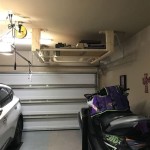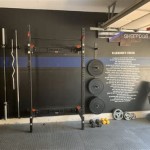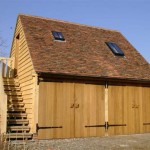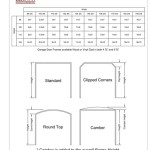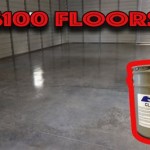How To Create A Home Gym In Your Garage
Transforming a garage into a functional home gym offers a convenient and personalized fitness solution. This transformation requires careful planning, execution, and an understanding of individual fitness needs. This article outlines the essential steps involved in converting a standard garage into a dedicated workout space.
The initial step involves a comprehensive assessment of the existing garage space. This assessment should encompass the dimensions of the garage, the condition of the flooring and walls, adequacy of ventilation and lighting, and the availability of electrical outlets. Accurately measuring the space will dictate the type and amount of equipment that can be accommodated. Identifying any structural issues, such as cracks in the flooring or dampness in the walls, is crucial for addressing potential problems before commencing the gym setup. Furthermore, assessing the existing electrical infrastructure will determine whether additional outlets or modifications are needed to support the power demands of fitness equipment.
Planning and Design Considerations
Strategic planning forms the foundation of a successful garage gym conversion. This phase entails defining fitness goals, selecting appropriate equipment, and developing a layout that maximizes space utilization and functionality. Individuals should first identify their primary fitness objectives, whether strength training, cardiovascular exercise, or a combination of both. This understanding will guide the selection of equipment and the overall design of the gym. For example, individuals prioritizing weightlifting may require a power rack, barbell, and weight plates, while those focused on cardio may opt for a treadmill, elliptical, or stationary bike.
Creating a detailed floor plan is essential. The floor plan should illustrate the placement of equipment, ensuring adequate clearance for safe movement and exercise execution. Consider traffic flow within the gym to avoid congestion and potential accidents. It is also prudent to allocate designated zones for different types of activities, such as a weightlifting area, a cardio zone, and a stretching or yoga space. Virtual design tools or simple sketches can aid in visualizing the layout and making informed decisions about equipment placement.
Budget considerations are paramount. Establishing a realistic budget will help prioritize equipment purchases and avoid overspending. Researching different brands and models of fitness equipment is advisable to compare prices and features. Exploring used equipment options or waiting for sales and promotions can significantly reduce costs. Consider the long-term investment value of specific equipment pieces and their potential impact on achieving fitness goals. Remember to account for additional expenses such as flooring, lighting, ventilation, and any necessary structural repairs.
Garage Preparation and Modifications
Preparing the garage space is a vital step in creating a safe and functional home gym. This involves addressing flooring, lighting, ventilation, and insulation. The existing concrete floor in most garages is often cold, hard, and prone to cracking. Covering the floor with suitable gym flooring provides cushioning, reduces noise, and protects against damage from dropped weights. Options include rubber mats, interlocking foam tiles, or rolled rubber flooring. Each option offers varying degrees of durability, shock absorption, and ease of installation. Rubber mats are a popular choice for weightlifting areas due to their robustness and ability to withstand heavy impact.
Adequate lighting is crucial for ensuring a safe and motivating workout environment. Garages often suffer from insufficient natural light, necessitating the installation of additional lighting fixtures. LED shop lights are an energy-efficient and cost-effective solution for providing bright and uniform illumination. Consider installing multiple fixtures to eliminate shadows and ensure clear visibility throughout the gym. Task lighting, such as adjustable spotlights, can be used to focus on specific areas or equipment.
Proper ventilation is essential for maintaining air quality and preventing the buildup of moisture and odors. Opening the garage door or windows can provide natural ventilation, but this may not be sufficient in all climates or seasons. Installing an exhaust fan can effectively remove stale air and humidity. Consider adding a ceiling fan to circulate air and improve comfort. In humid climates, a dehumidifier can help prevent mold and mildew growth. Insulation can improve temperature regulation and reduce energy costs. Insulating the walls and ceiling can help keep the gym cooler in the summer and warmer in the winter.
Equipment Selection and Installation
Selecting the right equipment is critical for achieving fitness goals and maximizing the functionality of the garage gym. The equipment chosen should align with individual fitness needs, space constraints, and budget limitations. The core equipment for a home gym typically includes a combination of strength training and cardiovascular equipment. For strength training, consider a power rack or squat stand, a barbell and weight plates, adjustable dumbbells, and a weight bench. These pieces provide a versatile foundation for performing a wide range of exercises targeting different muscle groups.
Cardiovascular equipment options include treadmills, elliptical trainers, stationary bikes, and rowing machines. Choose equipment that matches fitness preferences and space availability. Treadmills and elliptical trainers offer diverse workout options but require significant floor space. Stationary bikes and rowing machines provide effective cardio workouts in a more compact footprint. Consider incorporating functional fitness equipment such as resistance bands, medicine balls, kettlebells, and jump ropes. These items offer a wide range of exercise possibilities and are ideal for improving strength, balance, and coordination.
Proper installation of equipment is crucial for safety and functionality. Carefully follow the manufacturer's instructions for assembly and placement. Ensure that all equipment is securely positioned and stable before use. If installing heavy equipment, such as a power rack, consider bolting it to the floor for added stability. Regularly inspect equipment for wear and tear and perform any necessary maintenance to ensure proper function. Create a designated storage area for smaller equipment such as dumbbells, resistance bands, and medicine balls to keep the gym organized and prevent tripping hazards.
Consider the placement of mirrors to enhance the workout experience and improve form. Mirrors provide visual feedback, allowing individuals to monitor their posture and alignment during exercise. They can also make the gym feel larger and more spacious. Mount mirrors securely to the wall, ensuring they are positioned at a safe distance from equipment.
Integrating technology can enhance the workout experience. Consider installing a sound system for playing music or podcasts during workouts. A television or tablet can be used to stream workout videos or follow online fitness programs. Smart fitness equipment can track progress and provide personalized feedback. Utilizing fitness apps can assist in tracking workouts and monitoring performance. These technological additions can contribute to motivation and structure during exercise routines.
Safety protocols should be established to minimize the risk of injury. Implement a warm-up and cool-down routine before and after each workout. Learn proper exercise techniques and prioritize form over weight. Use spotters when lifting heavy weights. Keep a first-aid kit readily available in case of minor injuries. Consider taking a CPR and first-aid certification course to be prepared for emergencies. Maintaining a clean and organized gym environment minimizes the risk of accidents. Regularly wipe down equipment and sweep the floor to prevent slips and falls.

How To Turn Your Garage Into A Fitness Room

How To Create A Fitness Garage Gym In Your Home Schroeder Design Build

I Built My Dream Garage Home Gym

Creative Diy Garage Gym Ideas To Maximize Your Space Trusscore

How To Turn Your Garage Into A Fitness Room

How To Build A 500 Home Gym On

Transforming An Empty Garage Into My Home Gym Setup

How To Create A Home Gym In Your Garage Pinnacle Hardware

Home Gym In The Garage Bunnings Work Community

How To Build The Perfect Home Gym In A Small Garage Budget Friendly Strength Resurgence
Related Posts

